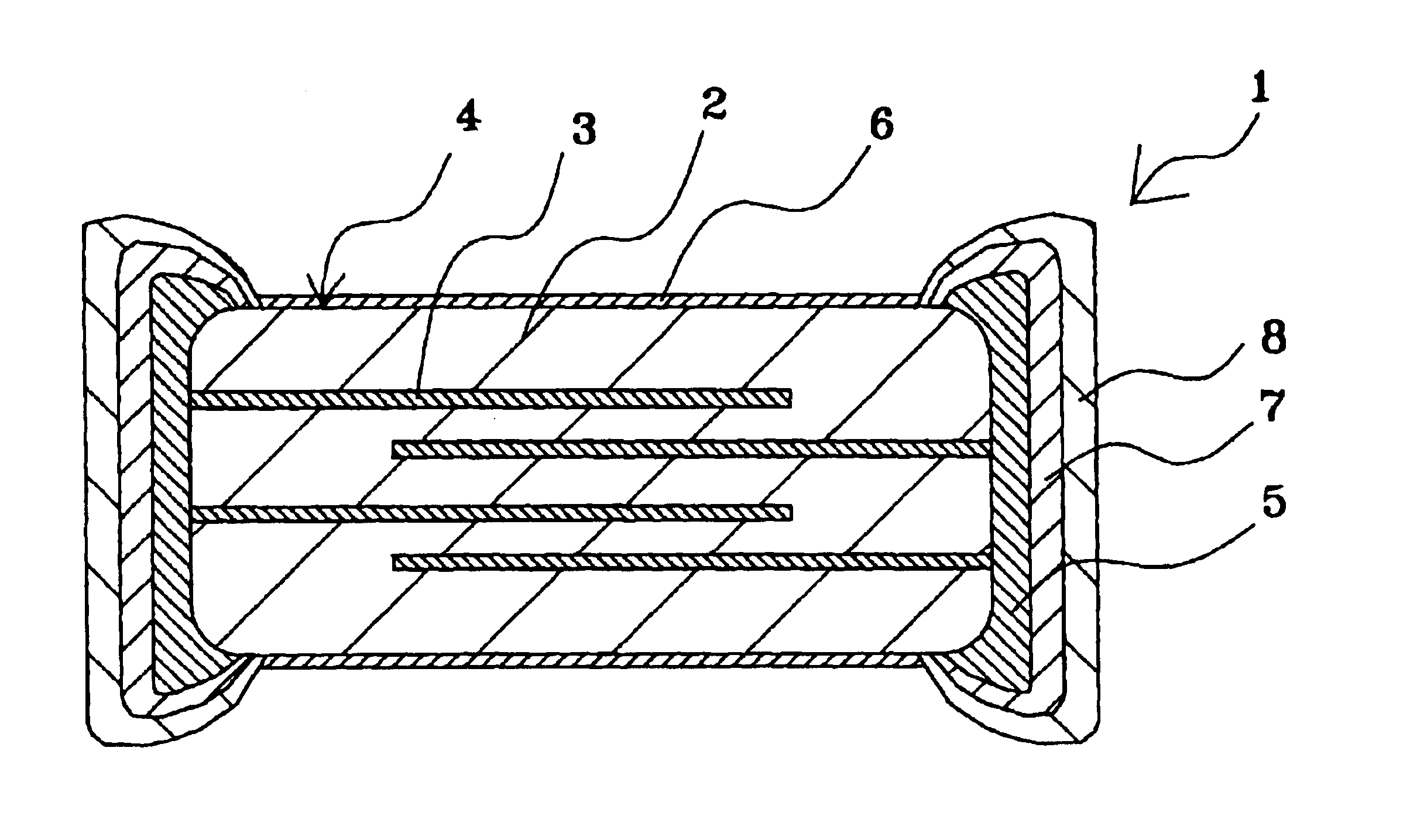Chip electronic component
a technology of electronic components and chips, applied in the direction of positive temperature coefficient thermistors, ceramic layered products, transportation and packaging, etc., can solve the problems of deterioration of properties, metal coatings on parts of elements, and penetration into ceramic elements
- Summary
- Abstract
- Description
- Claims
- Application Information
AI Technical Summary
Benefits of technology
Problems solved by technology
Method used
Image
Examples
Embodiment Construction
BaTiO.sub.3, TiO.sub.2, Sm.sub.2 O.sub.3 and MnCO.sub.3 were prepared as raw materials and then compounded so that the following formula was satisfied:
(Ba.sub.0.997 Sm.sub.0.003)TiO.sub.3 +0.0005 Mn.
After pure water was added, the compounded raw material powder was mixed and pulverized for 16 hours together with zirconia balls, and after drying it was sintered temporarily at 1,200.degree. C. for two hours and pulverized to form a temporarily-sintered powder. To this temporarily-sintered powder, an organic binder, a dispersant and water were added and mixed for ten hours together with zirconia balls to form a ceramic slurry. This ceramic slurry was formed into sheets by a doctor blade process and dried to form ceramic green sheets. Next, Ni electrode paste was applied onto a principal face of each ceramic green sheet by a screen printing process so as to form a desired pattern. The ceramic green sheets were stacked so that the Ni electrode paste patterns were placed opposite to each ...
PUM
| Property | Measurement | Unit |
|---|---|---|
| ionic radius | aaaaa | aaaaa |
| ionic radius | aaaaa | aaaaa |
| ionic radius | aaaaa | aaaaa |
Abstract
Description
Claims
Application Information
 Login to View More
Login to View More - R&D
- Intellectual Property
- Life Sciences
- Materials
- Tech Scout
- Unparalleled Data Quality
- Higher Quality Content
- 60% Fewer Hallucinations
Browse by: Latest US Patents, China's latest patents, Technical Efficacy Thesaurus, Application Domain, Technology Topic, Popular Technical Reports.
© 2025 PatSnap. All rights reserved.Legal|Privacy policy|Modern Slavery Act Transparency Statement|Sitemap|About US| Contact US: help@patsnap.com


